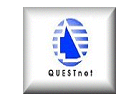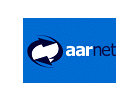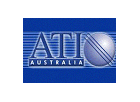








|
WEDNESDAY 4TH JULY - NEWSLETTER |
||
|
Lt Col Joy has witnessed the Gulf War and also the crisis in East Timor as Staff Officer to Major General Cosgrove. He has some interesting comparisons and developments in networking technology during those periods. What problems that face the military correlate to the commercial market? One of the greatest hurdles is security. Protecting, confidence, and information gathering Did you have any real security scares with your technology in the military? There is always a direct threat of a breach when you're working as a coalition with other countries. There are always going to be a lot of people accessing information, so you have to protect your national sources as well as your coalition's sources. So you weren't too worried about a direct threat then, more on safeguards of the system? There's always a direct threat so we have to be conscious of it and take it very seriously whether we're in the battlezone or an operational environment - we have to be ever vigilant and protective all of the time
.
|
What sort of lessons would you like technical specialists to learn from your experiences? I want to highlight the unique environment in which we work. We use the same technology but in a different way. We can't afford to be market leaders in technology because we can't afford to take the risks of the unknown. We're not about to take the revolutionary approach - more the evolutionary approach - from the presentations I've seen so far, most of the industry appears to share our view.
You may have seen someone resembling Dr Who (the one with the colourful scarf) running around QUESTnet. Well it's actually George McLaughlin, General Manager of AARNet. What seems to be happening at the moment regarding research and development infrastructure? We're in some very interesting times, with a lot happening. We're putting the finishing touches on connecting with overseas advanced Internet test-bed networks, namely Internet 2 in the USA and Canarie in Canada.
|
We're also putting an installation in Hawaii. Contrary to popular opinion, we didn't chose this location to get more trips there, it's actually the best place to put a station for those who want to get closer to networks in the Asia Pacific region. In fact we're firing this up as we speak. AARNet, together with several other organizations including APAC, Cisco, Powertel and DSTC, have been successful in securing government funds to implement a new high capacity backbone network in Australia. This money will hopefully come through in the next couple of weeks so we can start to roll out the project which should be in place by the end of the year. Is the age-old hurdle of obtaining funding for research and education networks improving in Australia? There is still an attitude problem in Australia regarding funding, but it is getting better. We have spent a lot of time lobbying and educating the appropriate people on the importance of this industry.
|
|
|
||

